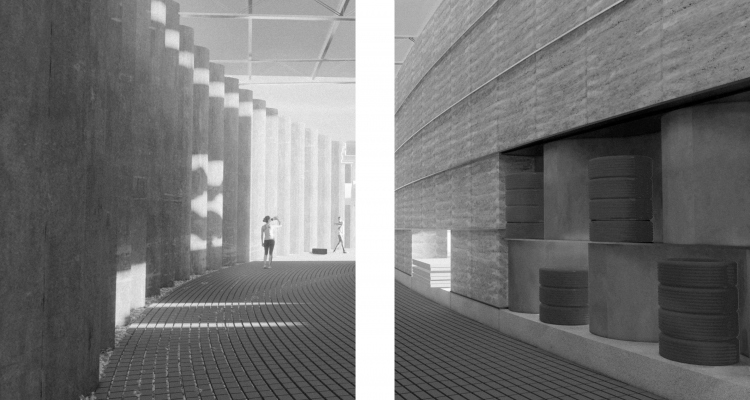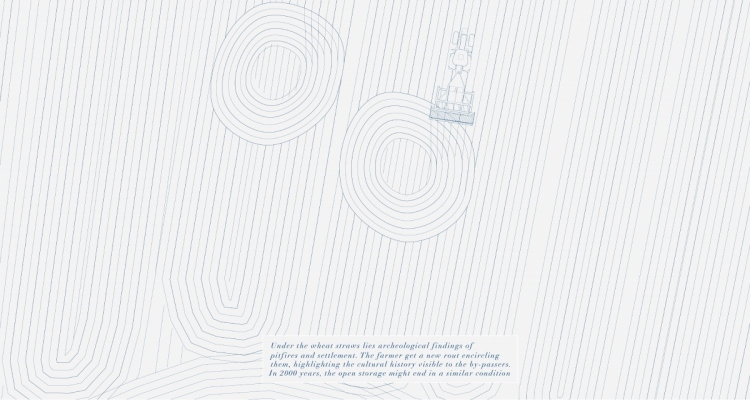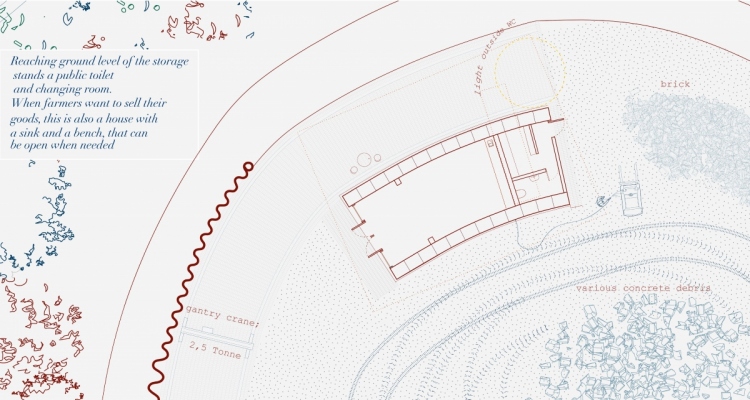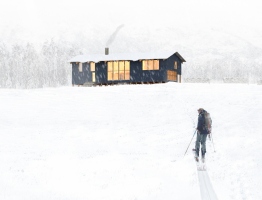Diplomprosjekt
Høst 2021
Institutt for arkitektur
Over time, all materials break down. Paper dissolves, metal rusts, and even porcelain can crack and chip away. When materials are scrapped, the agency they had is lost, but they still carry materiality and exist only as destabilised fractions of the urban fabric. Obsolete materials in an open landfill have an immediate relationship to the cycles of nature, because inevitably, nature will slowly approach. This project has an interest in the fluctuating aspect of the built, and unbuilt environment on a site that is an open storage in-between fields. The architectural project reorganises the landscape of the site to support the ongoing storage of materials and its meeting with hikers and joggers, farmers and (wild) animals. The built material is informed by the circularity of both the field and the depot.
As the fastest growing town in Norway, the centre of Ås is being built in the heighest speed profitable. Ås emerges in concrete, steel, and glass but in the periphery, scattered between fields, the open depot has grown parallel to the city development. It is a piece of land rented out to the municipality to store obsolete inert materials. The municipality also stores equipment that is used occasionally during the year. Joggers and hikers have to pass the site to get further into the forest. This is also how I, and other inhabitants know the site well. When taking the train from Oslo, the train passes the site right before approaching Ås station, revealing the materials extracted from the city and stored on the site to passengers. From the train window, this place serves as some kind of introduction to Ås. The boarders of the depot are defined by the surrounding fields, so as neighbours the two cultivated landscapes contain their own cycles.
The wheatfields look the same every year because they are treated the same every year. In spring and autumn they are plowed, shifting colour from golden to brown. In winter they get toboggan and skiing tracks on them. The depot that is the site of this project does not have seasonality, rather it is a continuously changing constellation of obsolete materials like gravel, concrete, brick and stones. It does not follow the rhythm of nature, but it expands and contracts with the movement of the built environment. This way the site can be understood as a mirror of what’s happening in town.
A landscape at work as a visible and accessible place for recirculation of masses, has a potential pedagogical aspect as it touches upon larger environmental and existential discussion about consumption and processing of materials. The masses on the site are already informally exhibited, but the architectural organisation of these materials can bring to light qualities that exist beyond the scenery of the city.
Informed by the circularity on site, the project interferes spatially with the ground by making use of the soil of the site by the technique of rammed earth. In Norway, the time-consuming process of ramming earth has to be done in summer. Therefore, the site also functions as a factory for rammed earth blocks during the building process, revealing the geological and spatial identity of the place. The architectural project facilitate for a meeting between the workers, visitors, seasons and the materials lifecycles.
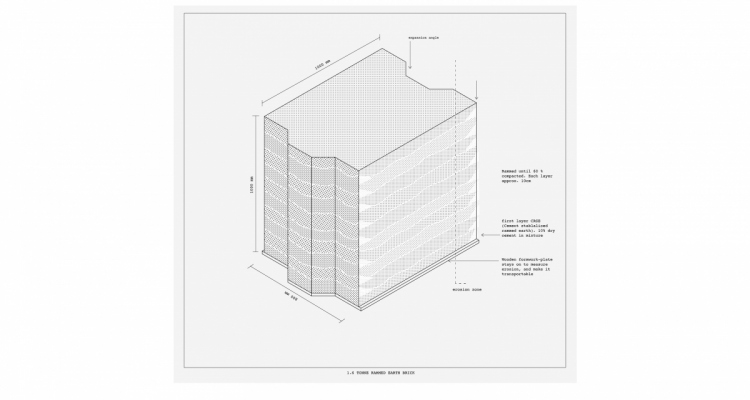
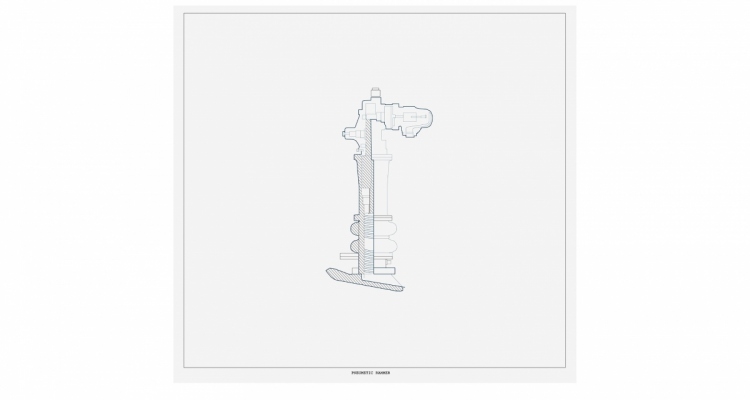
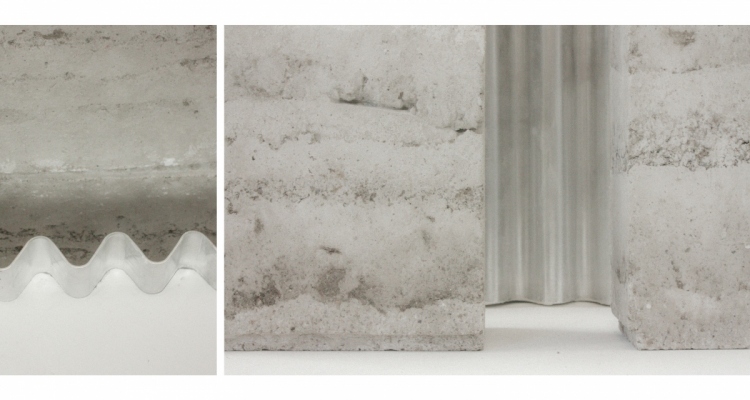
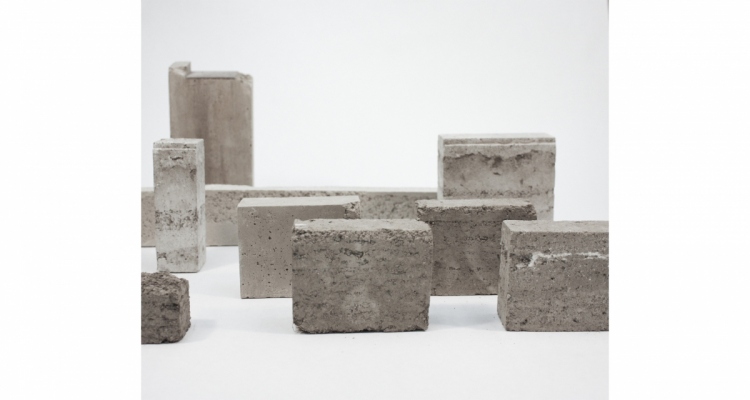

Anna Malin Albertina Grønsberg / anna.malin.gronsberg@stud.aho.no / +47 90185602
